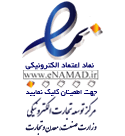Search published articles
Showing 24 results for Sadegh
Sina Jalili Rasti, Sadegh Cheragh Birjandi, Mohammad Amin Younessi Heravi, Ali Yaghubi,
Volume 18, Issue 2 (Mar-Apr 2024)
Volume 18, Issue 2 (Mar-Apr 2024)
Abstract
Seyed Sadegh Baniaghil, Fardin Balochi , Alireza Ahmadi,
Volume 18, Issue 3 (May-Jun 2024)
Volume 18, Issue 3 (May-Jun 2024)
Abstract
Sadeghali Azimi , Bahareh Bashardoust , Mohammad Hadi Tajik Jalayeri ,
Volume 19, Issue 2 (Mar-Apr 2025)
Volume 19, Issue 2 (Mar-Apr 2025)
Abstract
Seyed Sadegh Baniaghil , Fardin Balochi , Ereste Kazzak ,
Volume 19, Issue 4 (Jul-Aug 2025)
Volume 19, Issue 4 (Jul-Aug 2025)
Abstract

This work is licensed under a Creative Commons Attribution-NonCommercial 4.0 International License.



